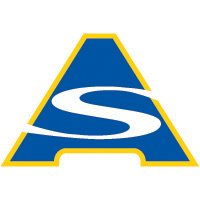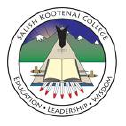What do they do?
Lay, repair, and maintain track for standard or narrow-gauge railroad equipment used in regular railroad service or in plant yards, quarries, sand and gravel pits, and mines. Includes ballast cleaning machine operators and railroad bed tamping machine operators.
Also known as:
Machine Operator, Rail Maintenance Worker, Special Equipment Operator, Track Equipment Operator (TEO), Track Inspector, Track Laborer, Track Machine Operator, Track Maintainer, Track Man, Track Mechanic, Track Repair Person, Track Repairer, Track Service Person, Track Walker, Track Welder, Track Worker, Trackman
-
1.7%
Change
Ranks #18 in job growth rate50Job Openings
Ranks #9 in net job growth
-
State Technical College of Missouri
Linn, MO
-
Pittsburgh Institute of Aeronautics
West Mifflin, PA
-
SUNY College of Technology at Alfred
Alfred, NY
-
Pennsylvania College of Technology
Williamsport, PA
-
Putnam Career and Technical Center
Eleanor, WV
Looking for colleges that offer a specific major? Use the College Match Tool to find your best-matched schools and discover your estimated Net Price!
- Doctorate or Professional Degree (<1%)
- Master's degree (<1%)
- Bachelor's degree (5%)
- Associate's degree (6%)
- Some college, no degree (36%)
- High school diploma equivalent (46%)
- Less than high school diploma (8%)
People in this career often know a lot about:
- Transportation - Knowledge of principles and methods for moving people or goods by air, rail, sea, or road, including the relative costs and benefits.
- Mechanical - Knowledge of machines and tools, including their designs, uses, repair, and maintenance.
- Building and Construction - Knowledge of materials, methods, and the tools involved in the construction or repair of houses, buildings, or other structures such as highways and roads.
People in this career often have talent in:
- Control Precision - The ability to quickly and repeatedly adjust the controls of a machine or a vehicle to exact positions.
- Manual Dexterity - The ability to quickly move your hand, your hand together with your arm, or your two hands to grasp, manipulate, or assemble objects.
- Multilimb Coordination - The ability to coordinate two or more limbs (for example, two arms, two legs, or one leg and one arm) while sitting, standing, or lying down. It does not involve performing the activities while the whole body is in motion.
- Problem Sensitivity - The ability to tell when something is wrong or is likely to go wrong. It does not involve solving the problem, only recognizing that there is a problem.
- Arm-Hand Steadiness - The ability to keep your hand and arm steady while moving your arm or while holding your arm and hand in one position.
- Reaction Time - The ability to quickly respond (with the hand, finger, or foot) to a signal (sound, light, picture) when it appears.
- Far Vision - The ability to see details at a distance.
- Flexibility of Closure - The ability to identify or detect a known pattern (a figure, object, word, or sound) that is hidden in other distracting material.
- Visualization - The ability to imagine how something will look after it is moved around or when its parts are moved or rearranged.
- Near Vision - The ability to see details at close range (within a few feet of the observer).
- Depth Perception - The ability to judge which of several objects is closer or farther away from you, or to judge the distance between you and an object.
People in this career often do these activities:
- Locate equipment or materials in need of repair or replacement.
- Maintain mechanical equipment.
- Weld metal components.
- Verify alignment of structures or equipment.
- Operate heavy-duty construction or installation equipment.
- Cut metal components for installation.
- Maintain construction tools or equipment.
- Drill holes in construction materials.
- Clean equipment or facilities.
- Spread sand, dirt or other loose materials onto surfaces.
- Compact materials to create level bases.
- Operate cranes, hoists, or other moving or lifting equipment.
- Smooth surfaces with abrasive materials or tools.
- Cut wood components for installation.
- Apply paint to surfaces.
- Apply sealants or other protective coatings.
This page includes data from:

 Occupation statistics: USDOL U.S. Bureau of Labor Statistics Occupational Employment Statistics
Occupation statistics: USDOL U.S. Bureau of Labor Statistics Occupational Employment Statistics








